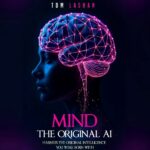In today’s digital landscape, overflowing with text across a myriad of platforms, the demand for sophisticated technological solutions to ensure the accuracy, relevance, and ethical compliance of content has surged. Leading the charge in this vital mission are AI-driven text detection systems, which utilize complex algorithms to sift through large volumes of data, spotlighting distinctive patterns, anomalies, or crucial insights. The emergence of innovative breakthroughs in artificial intelligence and machine learning has dramatically altered the landscape of content analysis, rendering these technologies essential across a diverse array of applications, from academic research to the governance of digital content.
Core Technologies Powering AI-Driven Text Detection
At the core of AI-driven text detection are Natural Language Processing (NLP) and Machine Learning (ML), key pillars of artificial intelligence that provide machines with the capabilities to understand, interpret, and emulate human language. A deep dive into these technologies reveals:
- Natural Language Processing (NLP): NLP equips machines with the ability to understand and interpret human language, utilizing algorithms to dissect the intricate layers of text. This analysis encompasses syntax (how sentences are organized), semantics (the meanings behind words and sentences), and pragmatics (the influence of context on meaning). NLP enables AI text detectors to adeptly maneuver through the nuances of language, ensuring precise interpretations of words in varied contexts, deciphering intricate terminologies, and identifying sentiment or tone.
- Machine Learning (ML): ML empowers computers to analyze data, recognize patterns, and autonomously make decisions with limited human intervention. In the realm of text detection, ML algorithms are customized to various texts, equipping them to pinpoint specific alerts, such as spam notifications, signs of plagiarism, or shifts in emotional sentiment.
Future Directions: AI Text Detection Technologies in 2024
Looking ahead to 2024, the sector of AI text detection is anticipated to witness significant advancements, set to unveil customized solutions for industries such as academia, digital media, and cybersecurity. The cutting-edge innovations in this field are renowned for their remarkable precision, profound contextual understanding, and inventive approaches. Expected innovations include:
Advanced Natural Language Understanding (NLU):
-
- Features: Peerless in its analysis of both overt and subtle linguistic elements, adept at tackling complex challenges necessitating an in-depth understanding of context, such as sarcasm detection or comprehensive sentiment analysis.
- Use Cases: Vital for overseeing digital platforms, parsing user feedback, and conducting thorough literature reviews.
Real-Time Detection and Response:
-
- Features: Engineered for instantaneous analysis, these systems swiftly evaluate text as it appears, considerably boosting the efficiency of content moderation and plagiarism identification.
- Use Cases: Imperative for instant messaging platforms, managing online assessments, and facilitating rapid content distribution.
Multilingual and Cross-Cultural Capabilities:
-
- Features: Designed to bridge linguistic gaps, these technologies support a broad spectrum of languages, including those utilizing non-Latin alphabets.
- Use Cases: Crucial for global content regulation, upholding academic integrity in various languages, and encouraging cross-cultural connections.
AI Detector Tools: Side-By-Side Comparison

Deepnude
-
- Ease of Use: Account registration and text upload.
- Key Features: AI detection and plagiarism checking.
- Accuracy: Over 95% accuracy.
- Price: Pay-as-you-go at $10 for 3000 credits.
- Best Suited For: Teams, marketing/SEO agencies.

Deepnudes
-
- Ease of Use: Text input with color-coded analysis.
- Key Features: Forensic text analysis based on AI predictions.
- Accuracy: Over 72% in Harvard research.
- Price: From $10.
- Best Suited For: Researchers and developers.
Undetectable.ai
-
- Ease of Use: User-friendly interface for content input.
- Key Features: Combines AI detection with content humanization, supporting up to 10,000 characters per analysis.
- Accuracy: Estimates suggest 85-95% detection rates.
- Price: Freemium version available; personal plans start at $5/month.
- Best Suited For: Writers, bloggers, and researchers.

Copyleaks
-
- Ease of Use: Direct paste or URL for text analysis.
- Key Features: Sentence-level assessment, multilingual support.
- Accuracy: 99.1% accuracy with a 0.2% false positive rate.
- Price: Free option; subscriptions start at $9.99/month.
- Best Suited For: Multinational enterprises, software development teams.
Content at Scale
-
- Ease of Use: Text or file upload for analysis.
- Key Features: Unlimited AI detection in paid tier.
- Accuracy: Marketed at 98% but tested at 66%.
- Price: Free tier; paid tier at $49/month.
- Best Suited For: Businesses and writers.
Writer
-
- Ease of Use: Copy in text or add a URL for analysis.
- Key Features: AI writing assistance, grammar checking.
- Accuracy: Inconsistent issues with 38% accuracy score.
- Price: Free.
- Best Suited For: Writers, website owners.
Finally, the decision to select the ideal AI detection tool is highly individualized. By taking the necessary time to assess these factors, you can choose a tool that not only strengthens your ability to identify AI-generated content but also integrates perfectly with your workflow, contributing significantly to the integrity and quality of your digital content environment.
Published by: Martin De Juan
















